Vintage Victorian images reveal the early days of tourism
Journey to the past
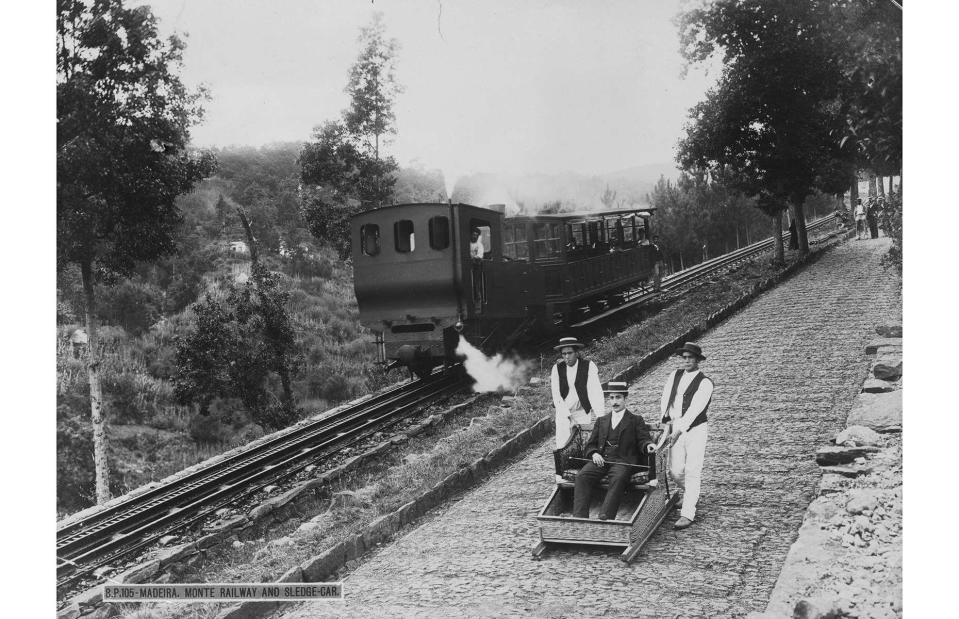
Hulton Archive/Getty Images
While the concept of travelling for personal pleasure stretches back much further than the invention of the camera, the advent of photography did serendipitously align with the tourism boom of the Victorian and Edwardian eras. This was the start of the symbiotic relationship between photography and tourism, meaning destinations could promote themselves across the world and travellers had an exciting means of commemorating their time away.
Read on to see incredible black-and-white images that reveal the rise of leisure travel we might recognise today...
Full steam ahead
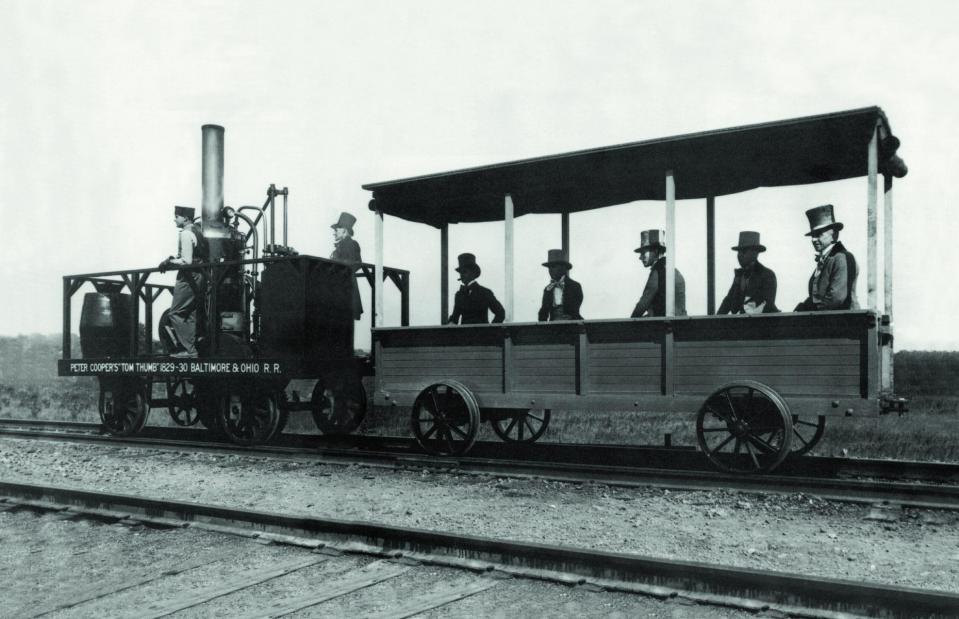
Buyenlarge/Getty Images
The early 1800s saw the first steam locomotives running on England’s tracks, signalling the beginning of train travel. By 1829, the technology had caught the attention of Peter Cooper, a self-educated inventor from New York. He constructed an engine called 'Tom Thumb’ (pictured, circa 1900) that ultimately replaced horsepower on America’s first public-use train line, the Baltimore and Ohio Railroad. Tom Thumb, the first American-built steam locomotive to serve commercially in the US, chugged out for its first test run on 24 August 1830 with a dozen passengers.
Connecting Canada
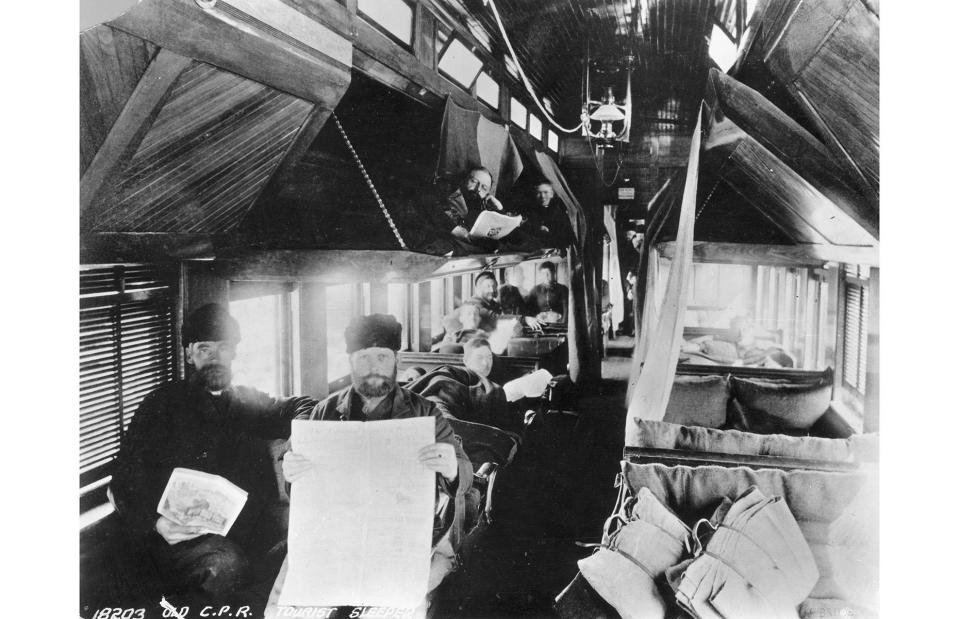
Hulton Archive/Getty Images
Train travel was growing in popularity elsewhere in North America too. This 1875 image shows passengers on the Canadian Pacific Railway (CPR) occupying a tourist sleeping car – note the fold-down upper berths and privacy curtains. It would be another decade after this photo was taken that the CPR was completed in its entirety, spanning the width of the world’s second-largest country from coast to coast.
The era of grand railway hotels
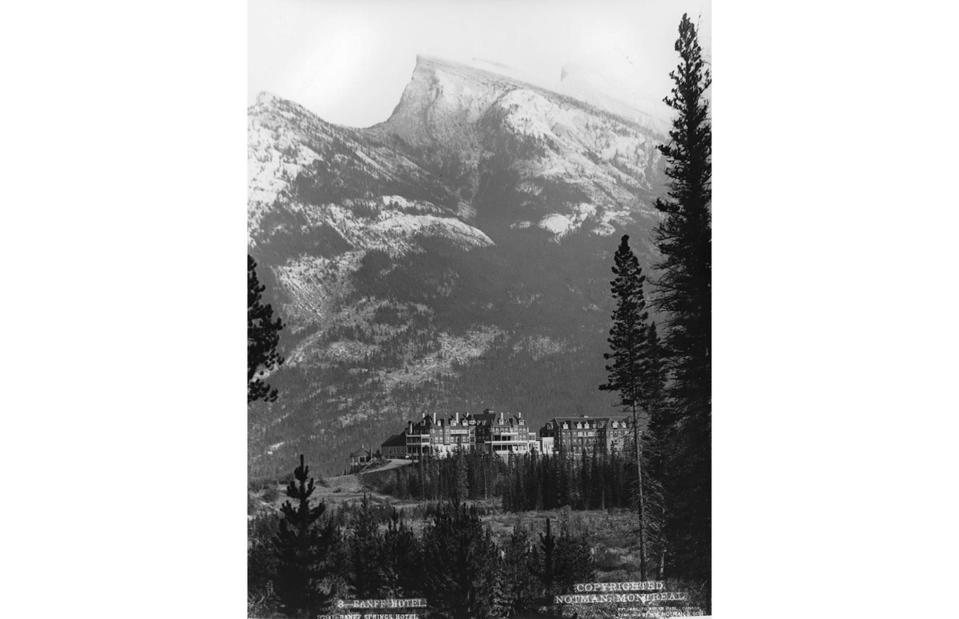
Musée McCord Museum/No restrictions/Wikimedia Commons
In 1885, shortly after the last spike of the Canadian Pacific Railway was driven in, the company opened a number of grand railway hotels to help boost tourism along its tracks. One of these was the Banff Springs Hotel in Alberta, which opened in 1888. Pictured here in 1904, the hotel had thermal pools fed by hot springs in the Rockies and was originally built from wood. Now called the Fairmont Banff Springs, the hotel remains one of the most luxurious stays in Canada’s oldest national park and has been a protected historic site since 1988.
Beside the seaside
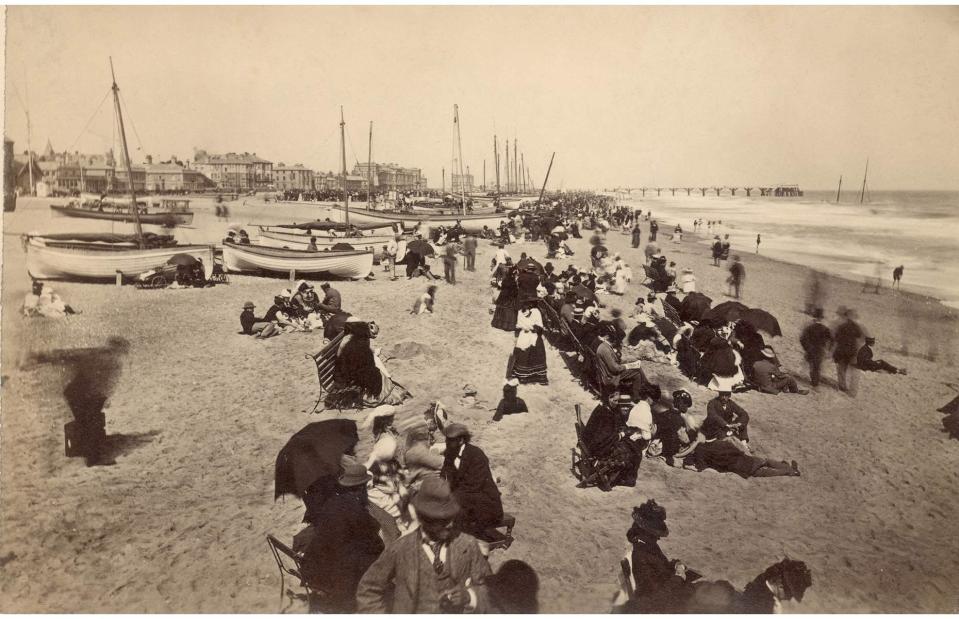
Otto Herschan Collection/Hulton Archive/Getty Images
As the UK’s rail network continued to expand throughout the latter half of the 19th century, travel became less of a luxury for the upper classes and more accessible for the average Victorian. This, coupled with the introduction of bank holidays in the 1870s, further democratised travel and gave rise to the quintessential British beach break. A stark contrast to the notoriously smoggy industrial cities of the era, seaside resorts such as Blackpool, Eastbourne and Great Yarmouth (pictured here around 1875) offered fresh air and a much-needed change of scenery.
Embracing the bathing machine
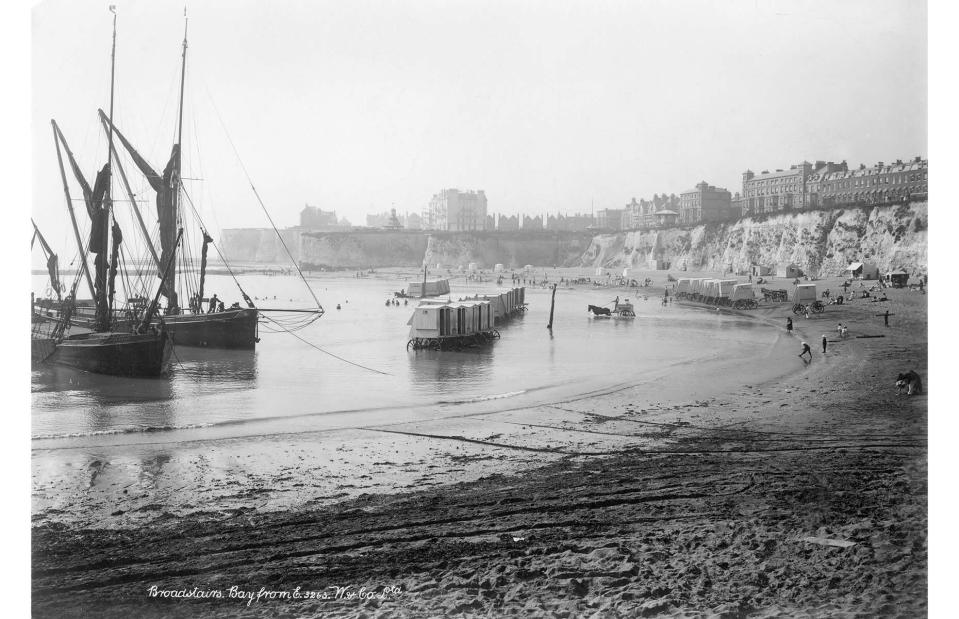
English Heritage/Heritage Images/Getty Images
But given the conservative attitudes of Victorian society, women visiting the beach were required to protect their modesty while dressing for a swim – there was no stooping awkwardly behind a towel in those days. So portable changing booths called bathing machines were invented, which could be rolled out into the shallows. As shown here in this circa-1890 photograph of Broadstairs in Kent, female holidaymakers would board a horse-drawn cart on the beach and enter the machine from one side. After changing into their swimming costumes, they could then exit directly into the sea from the other side.
Feeling the sand beneath your... stockings?
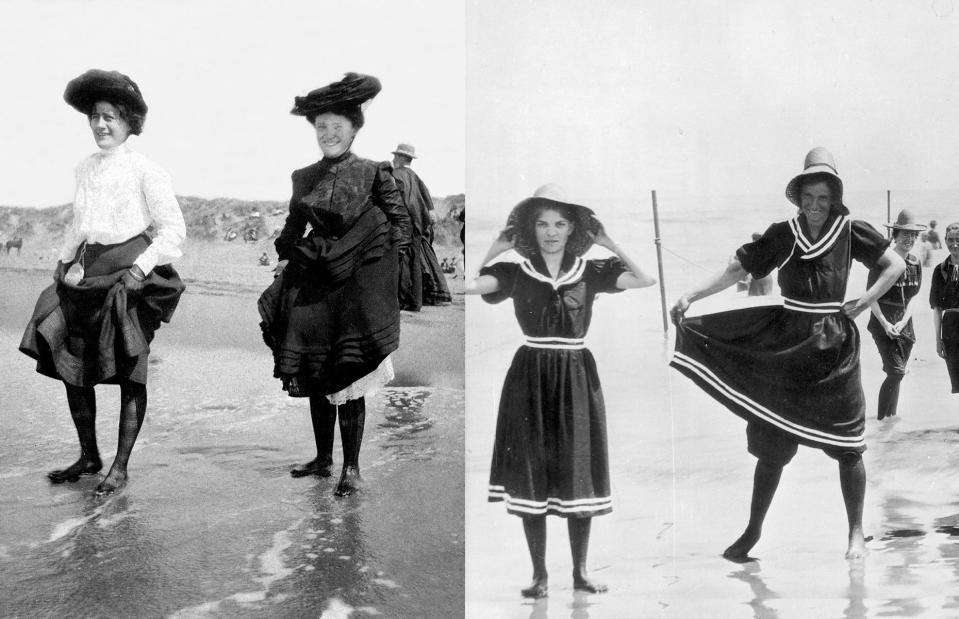
Kirn Vintage Stock/Corbis via Getty Images and American Stock/Getty Images
These ladies on the left clearly couldn’t wait to change into their bathers before dipping their toes in the ocean. But as you can see from the right-hand photo, snapped in Santa Monica around 1890, Victorian swimwear for women wasn't all that different from regular clothes. They still had to wear dresses, drawers and stockings even if they were just going for a paddle.
The emergence of Egyptomania
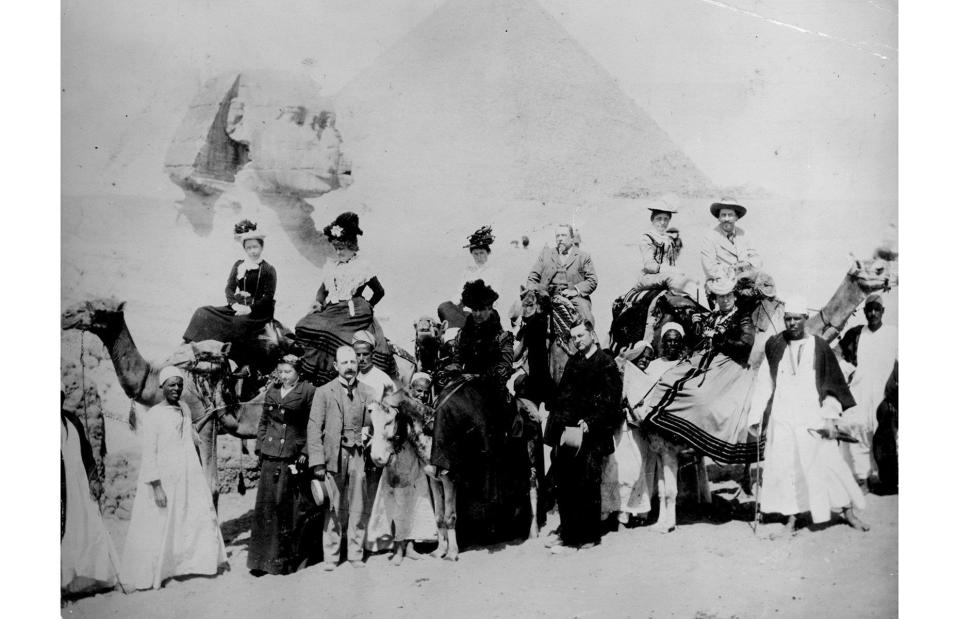
Hulton Archive/Getty Images
The late 1800s didn’t just see a boom in domestic tourism. Those that could afford to travel further afield did so with great intrigue, especially to Egypt. The Victorian fascination with the land of pharaohs – a phenomenon called ‘Egyptomania’ – was piqued by the translation of the Rosetta Stone in 1822 and, later, the British conquest of Egypt in 1882 (also known as the Anglo-Egyptian War). This led the North African country to become somewhat exoticised in the eyes of affluent Victorian tourists, like those pictured here circa 1880 in front of the Sphinx in Giza.
A Saharan sojourn
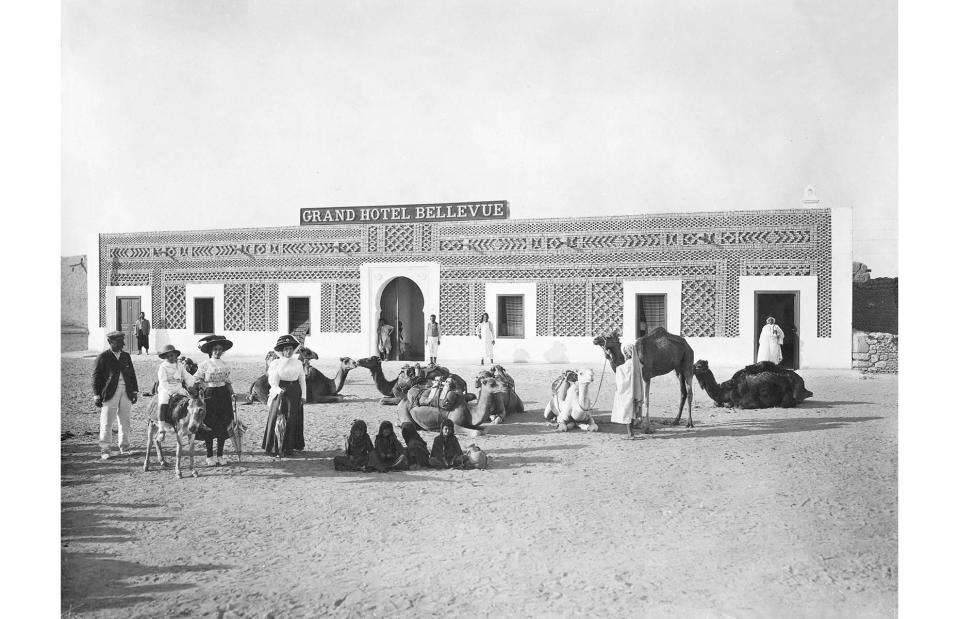
adoc-photos/Corbis via Getty Images
Tunisia also benefited from Western tourists during this time, given it was under French colonial control from 1881. Taken at the turn of the 20th century, this photo shows the facade of the Grand Hotel Bellevue which was once located in the desert oasis town of Tozeur. In order to support the growing number of visitors to the region, a railway station was established at Tozeur around 1913. The architectural style of the station and the Grand Hotel Bellevue bore influences from local Islamic culture, such as archways and mosaic tiles.
Building 'America's Playground'
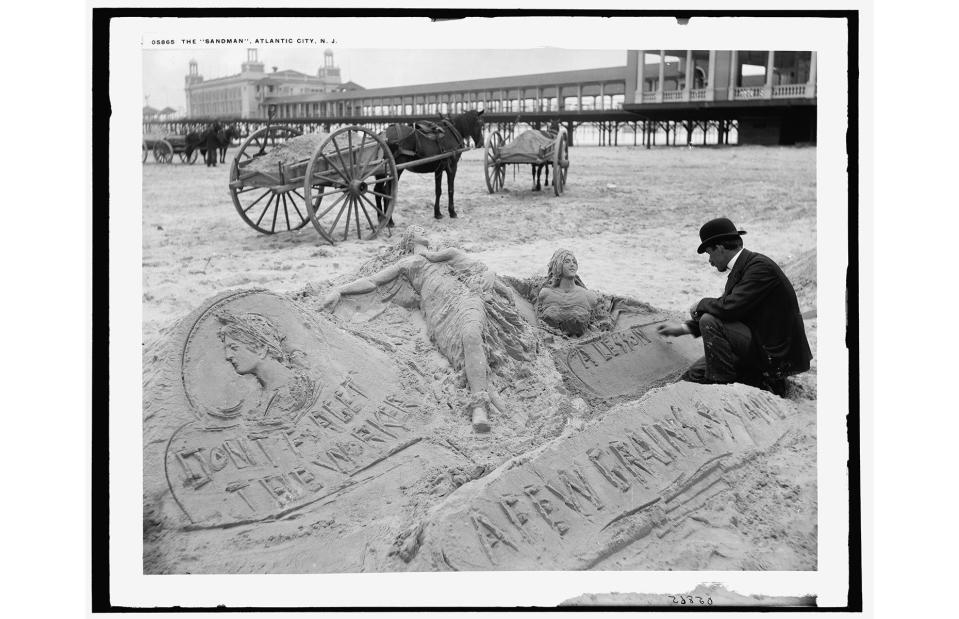
Heritage Art/Heritage Images via Getty Images
Elsewhere, the idea of the Victorian seaside resort was catching on across the pond too. Atlantic City in New Jersey, having joined America’s burgeoning rail network in 1852, soon became an accessible vacation destination for city dwellers from New York and Philadelphia. It gained an increasing roster of hotels and attractions throughout the late 19th century, with the first incarnation of its famous boardwalk opening in 1870. Here, around 1900, a sand sculptor gets to work next to the iconic Steel Pier, which opened as an amusement pier in 1898.
Sydney before surfing
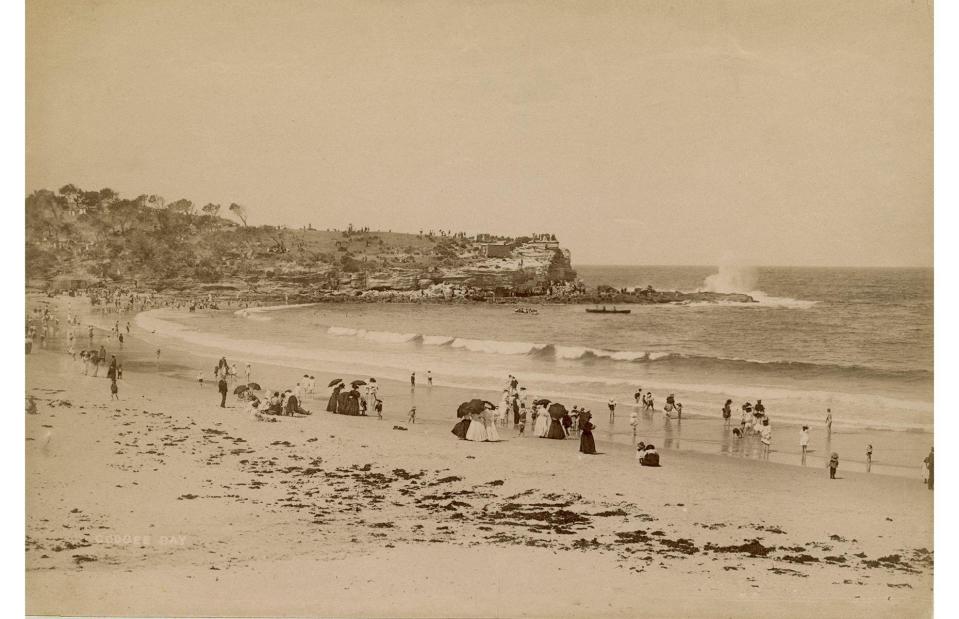
Hulton Archive/Getty Images
Despite ocean swimming being outlawed, beach breaks were also popular in the Australian colonies with an influx of British expats arriving in Victorian times. One favoured staycation spot was Coogee Bay, located five miles (8km) from the centre of Sydney. This albumen print from 1880 catches Coogee at the very beginning of its life as a seaside resort, just before trams started serving the suburb in 1883. The 1880s also saw the opening of the Coogee Palace Aquarium, which housed a swimming pool, bandstand and open-air bar as well as a host of animals.
Mountaineering goes mainstream
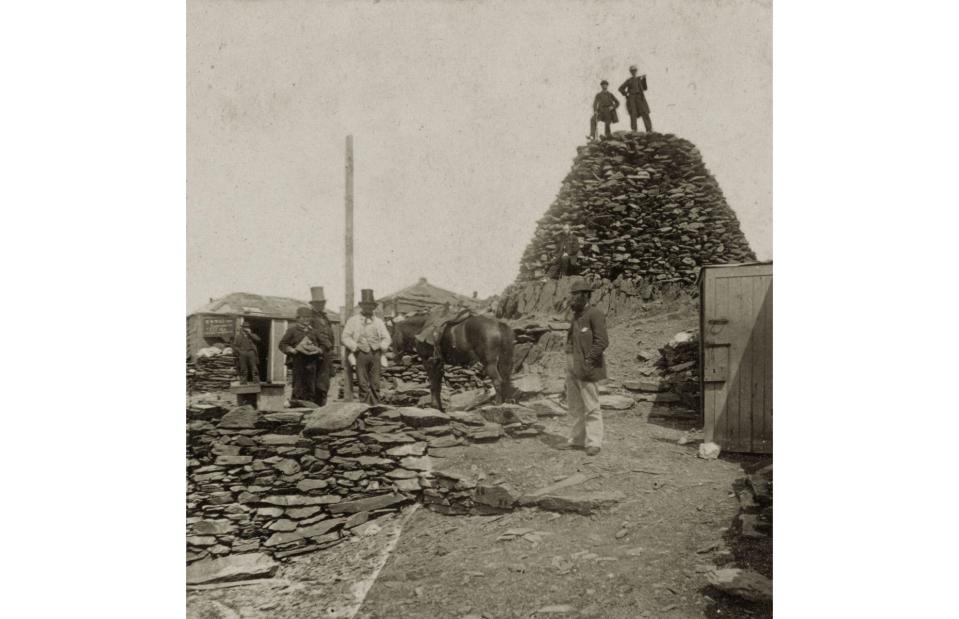
D and S Photography Archives/Alamy
As the 19th century wore on, climbing mountains was no longer an activity reserved for scientists doing fieldwork. More and more people were doing it for fun, and Mount Snowdon – the highest mountain in Wales – was attracting a surge of hikers. By the 1850s, two wooden huts (pictured here circa 1860) had been erected at Snowdon’s summit. Offering shelter and refreshment to the 200-plus tourists reaching the mountaintop daily during the climbing season, these so-called summit hotels were eventually demolished in the 1930s to make way for a new summit building, complete with a restaurant, railway station and accommodation.
Adventures in the Adirondacks
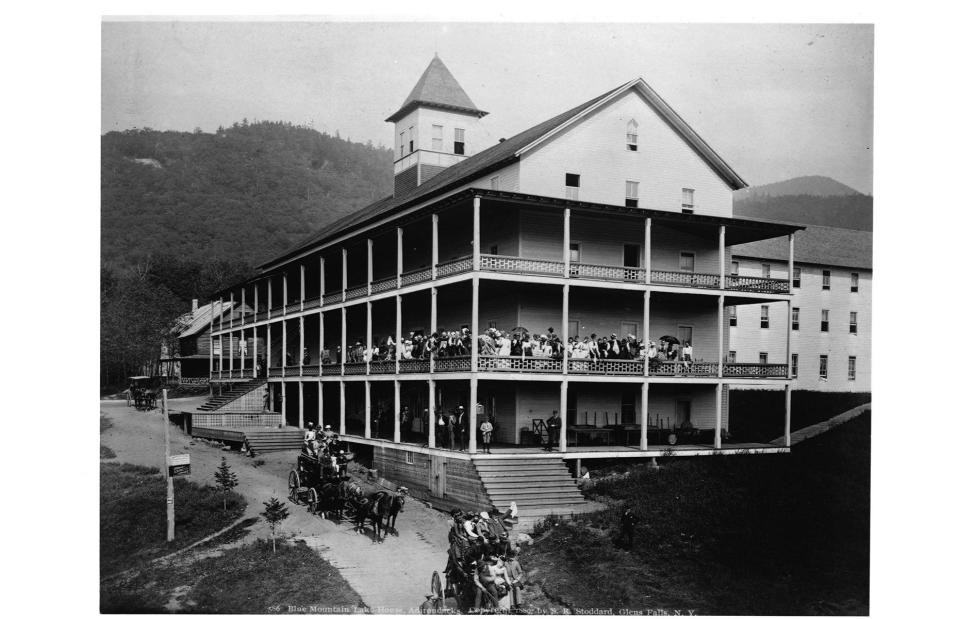
Seneca Ray Stoddard/Library of Congress/Corbis/VCG via Getty Images
In the years following the Civil War, many Americans enjoyed a period of peace and prosperity. With more disposable income than ever before, and with trains and steamboats enhancing the accessibility of remote locations, they had a newfound appreciation for spending their leisure time in nature. This brought many New Yorkers to the tranquillity of the Adirondacks on vacation, leading to a boom in mountain resort hotels and lodges. Pictured here in approximately 1889 is the Blue Mountain Lake House.
A girls’ trip to Yosemite
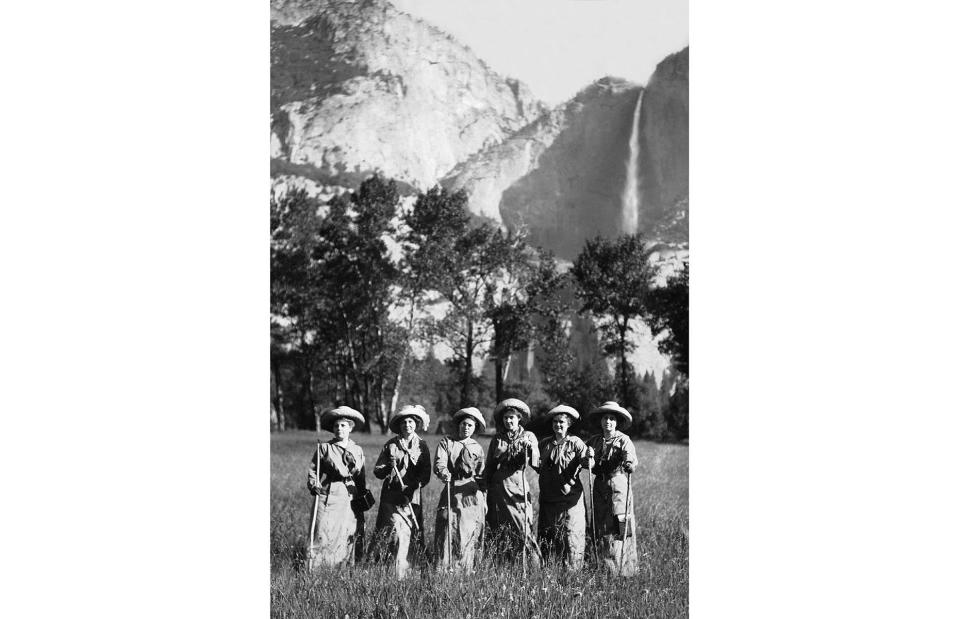
Kirn Vintage Stock/Corbis via Getty Images
This desire to be closer to nature also beckoned tourists to America’s national parks. In 1864, California’s Yosemite Valley made history when it (along with Mariposa Grove) became the first piece of land ever to be protected for public enjoyment by the US government. The area, marked by granite monoliths and giant sequoia trees, was officially designated a national park in 1890. Taken in front of Yosemite Falls around 1900, this souvenir photo must have been a great keepsake for this intrepid group of girlfriends visiting the park.
Don't just book it, Thomas Cook it
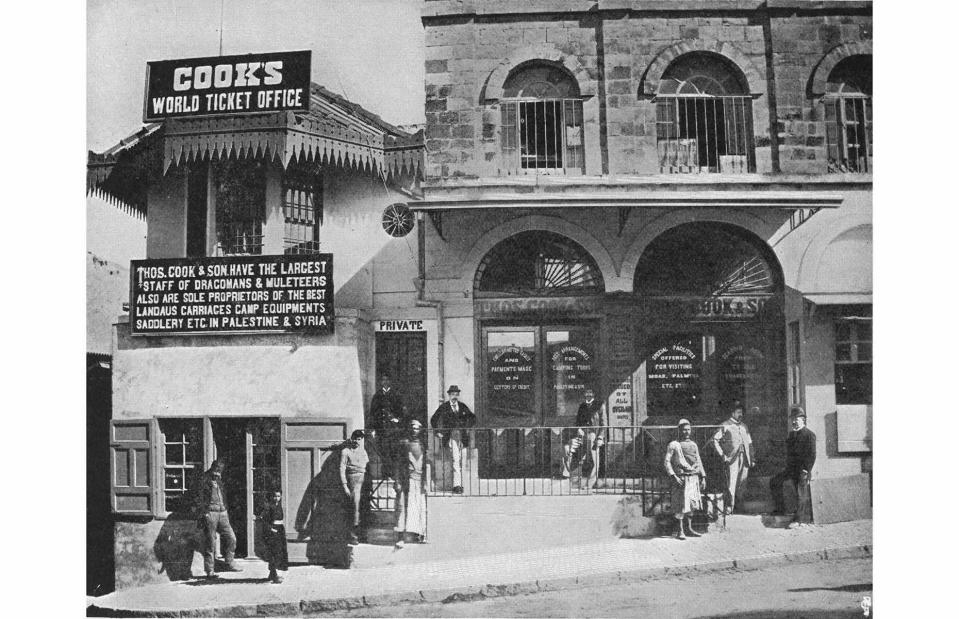
Hulton Archive/Getty Images
A growing sense of wealth and wanderlust among the Victorian middle class resulted in the world’s first package holidays. British businessman Thomas Cook’s eponymous travel agency first began offering train holidays across England in the 1840s, but quickly expanded its trips throughout the British Empire and into continental Europe, North America, Africa and Asia. These ‘package’ tours included everything a traveller needed, from transport to accommodation and meals. The company also helped invent travellers’ cheques and led the first known round-the-world tour in 1872. Pictured here around 1900 is Thomas Cook’s world ticket office in Jerusalem.
The first volcano tourists
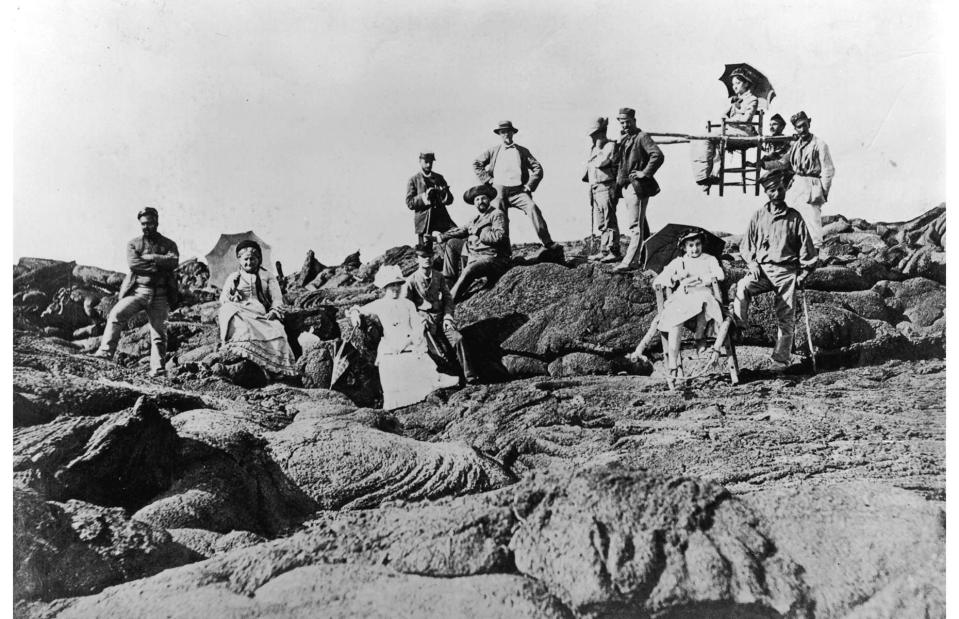
G Sommer/Getty Images
If you thought volcano tourism was a modern phenomenon, then think again – it was Thomas Cook who organised the first tour group to Italy’s Mount Vesuvius in 1841. This image commemorates a similar excursion in 1888; escorted by local porters, female tourists in Victorian dress pose among the lava fields of the volcano that buried Pompeii in ash in AD 79. In the top-right of the photo, a woman is being carried in an open, sedan-like chair, like those that would have been typically used to transport the wealthy through narrow city streets in the 17th and 18th centuries.
Ancient attraction
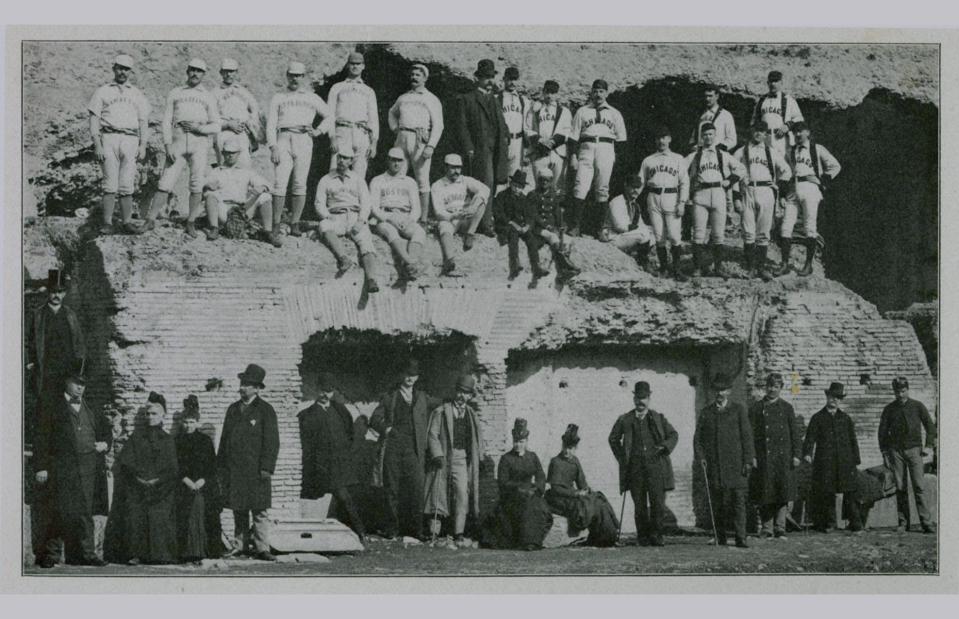
Transcendental Graphics/Getty Images
Vesuvius wasn’t the only Italian sight to draw attention with tourists in the 1880s. As part of a round-the-world tour in November 1888, two teams of major league American baseball players stopped off in Rome before scaling the ancient walls of the Colosseum for a photo opportunity. They might not have seen the fabled Roman amphitheatre at its finest though. It’s thought that by the 20th century, almost two thirds of the original arena had been destroyed by a devastating combination of environmental factors and human neglect. To this day, restoration is ongoing.
(Don't) feed the birds
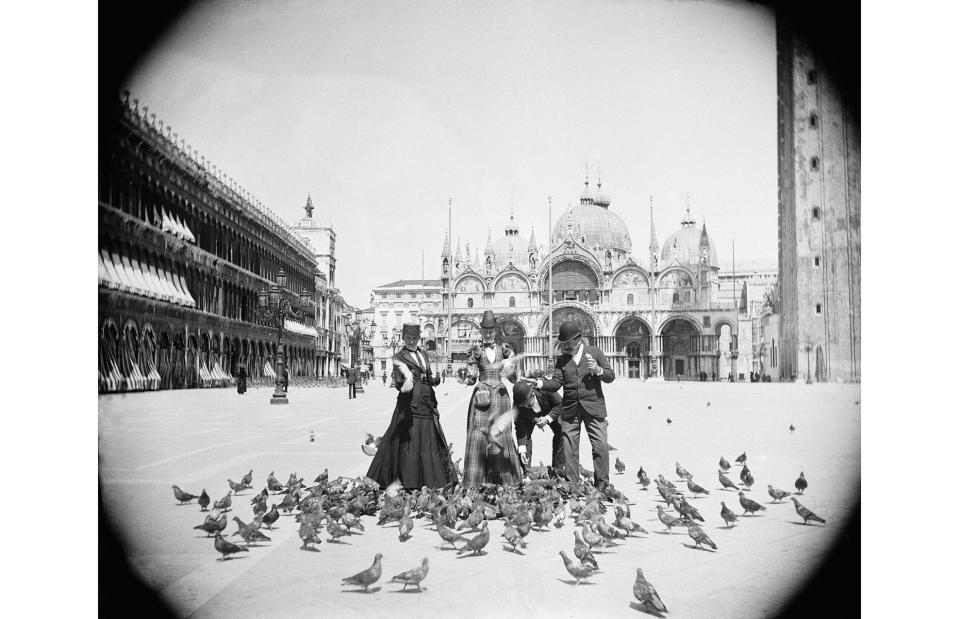
Bettmann/Getty Images
Venice has long had a love-hate relationship with tourism. While visitors are a huge source of revenue here, too many of them have proved to be a blight on the beauty and infrastructure of this historic lagoon city. Though Venice had been a cultural crossroads since the days of the Silk Road, the Victorian era is when it really became a destination in its own right, with travellers making use of new modes of transport such as the steamship to reach it. This photo from 1894 shows the pigeons of St Mark's Square being fed, a tradition that has been banned in the floating city since 2008.
Le Tour-ism Eiffel
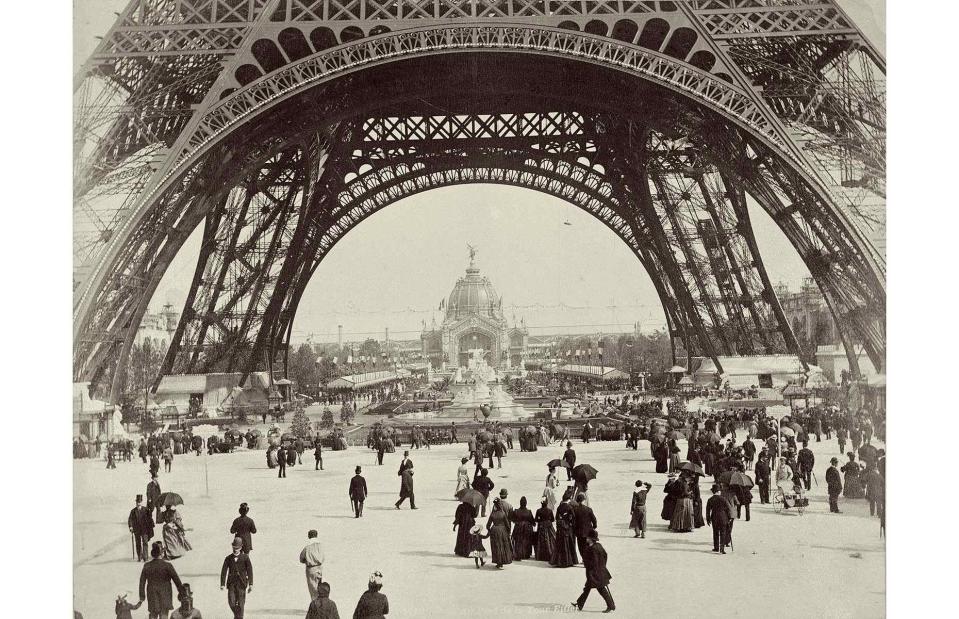
Historica Graphica Collection/Heritage Images/Getty Images
Today, France is the world's most visited country. In the late 19th century, it gained one of its best-loved landmarks. The Eiffel Tower was built for the 1889 World’s Fair in Paris and was only ever meant to be temporary, but the iron structure was ultimately spared the wrecking ball due to its value as a radiotelegraph station. Pictured here in the year of its completion, the emblematic tower was clearly already a hit with sightseers. Nowadays, it’s said to attract more visitors than any other paid tourist attraction on the planet.
A trip to the zoo
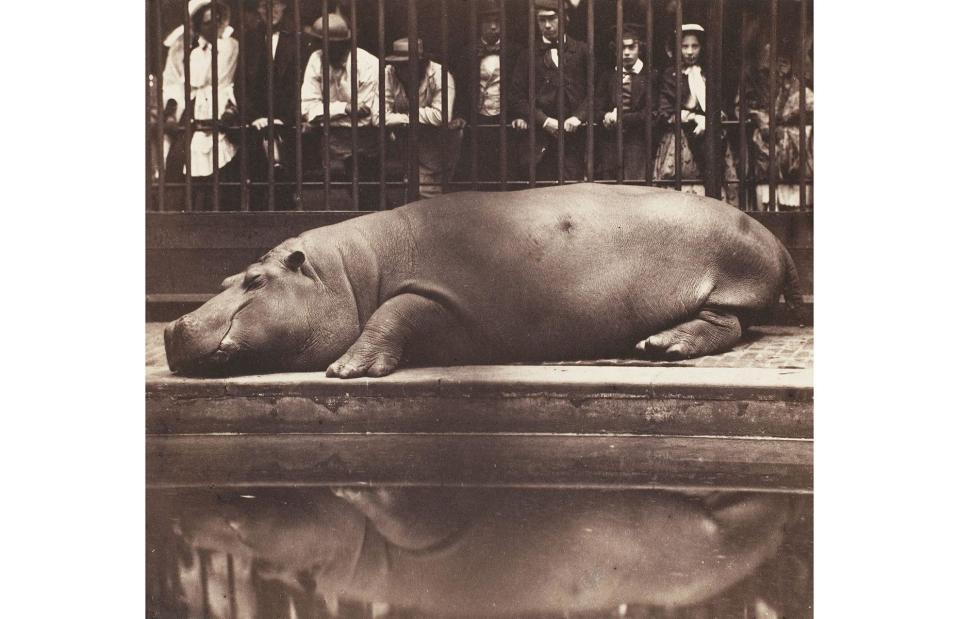
Heritage Art/Heritage Images via Getty Images
Across the English Channel, ZSL London Zoo in Regent’s Park opened in 1828 and remains one of the British capital’s top visitor attractions nearly 200 years later. It was home to many of the displaced animals from the Tower of London after its Royal Menagerie closed in the 1830s. In 1849, it unveiled the world’s first reptile house. This photograph from 1852 shows visitors huddled around the enclosure of the hippopotamus Obaysch, who moved into London Zoo in 1850. It was the first living hippo to be seen in Europe since the Roman era.
The first Maid of the Mist
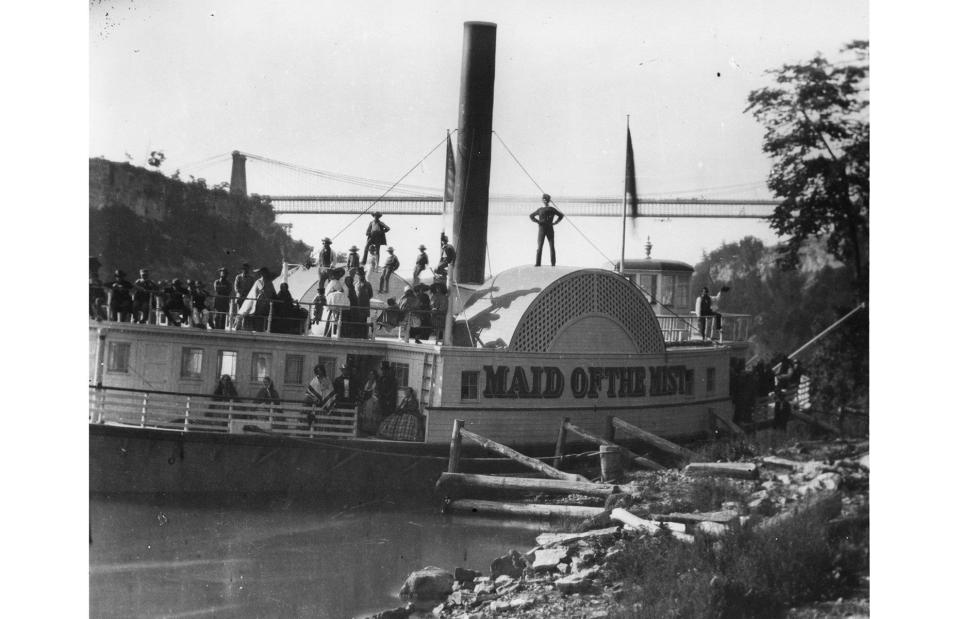
William England/London Stereoscopic Company/Hulton Archive/Getty Images
Formed more than 12,000 years ago, Niagara Falls long predates the invention of the camera. But what we do have on record are images of its early sightseers. Since 1846, visitors have been able to take a ride beneath the immense curtains of water on the Maid of the Mist boat, recognised as one of the oldest tourist experiences in North America. The first Maid of the Mist, pictured here in 1859, was a charming wooden steamer that took adventurous Victorians into the heart of the cascades.
Touring a German salt mine
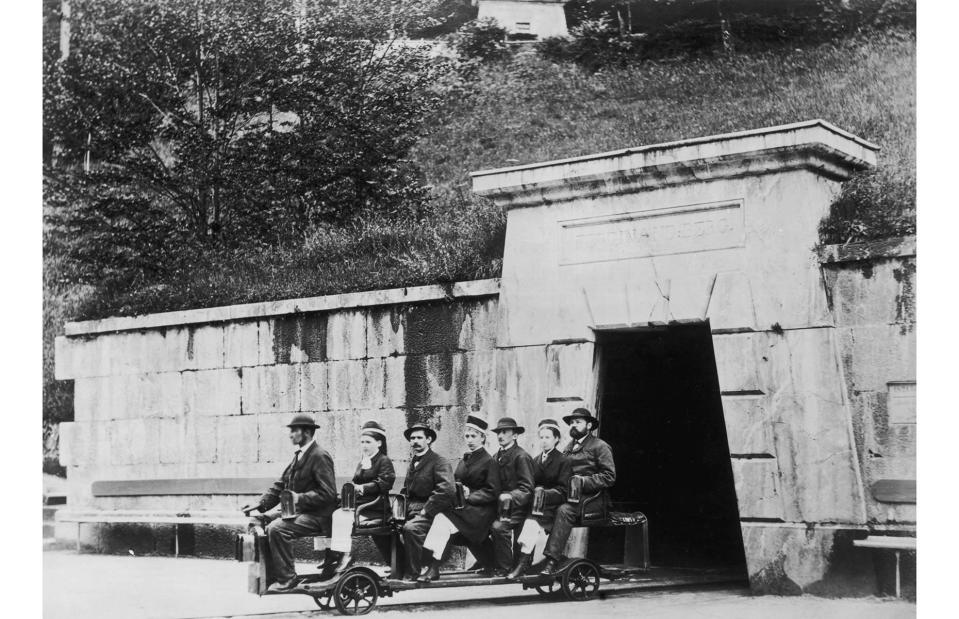
Hulton Archive/Getty Images
Berchtesgaden Salt Mine in Bavaria has been operational since 1517, making it the oldest working mine in Germany. It began welcoming visitors in 1840, who could board a small train and venture into the underground tunnels on a guided tour. Pictured here in 1867, you can see that the tourists are suitably layered up for the mine’s constant cool temperature of 12°C (53.6°F). A mine train similar to this one, albeit a more modern iteration, still ferries people into Berchtesgaden’s crystalline caverns today.
The origins of the safari holiday
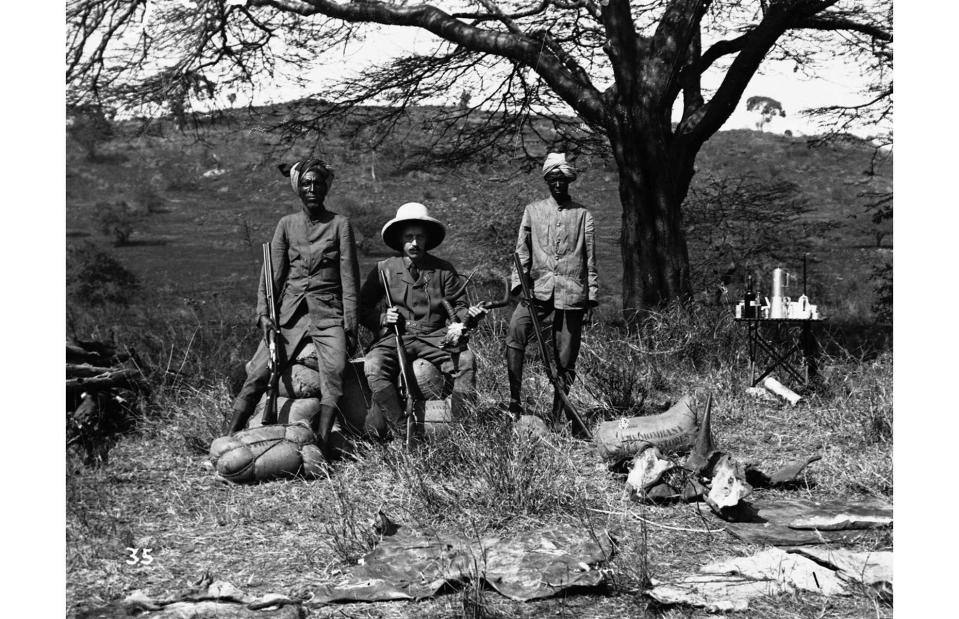
Hulton-Deutsch Collection/CORBIS/Corbis via Getty Images
Westerners first became familiar with the word safari – meaning ‘long journey’ in the Swahili language – in the early 19th century. English military engineer and keen hunter William Cornwallis Harris led a year-long expedition across South Africa in 1836. During the years that followed, more explorers found themselves drawn to the African bush. Early safaris (like this one pictured here, photographed in 1895) were much less concerned with ethical wildlife encounters and responsible game drives than today’s best tour operators are. Instead, they focused on hunting and collecting animal trophies.
Seeing the sakura
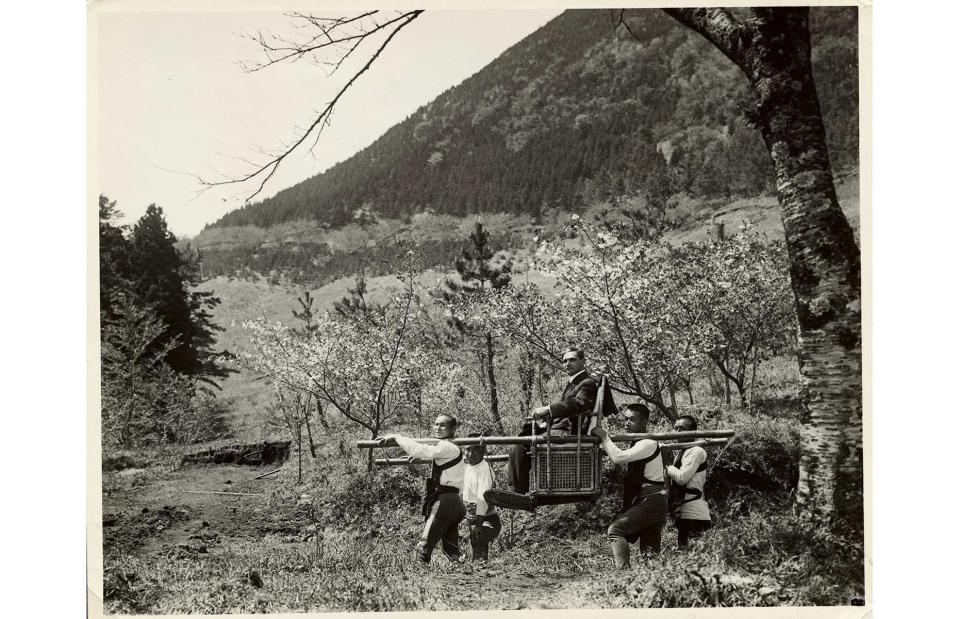
Bettmann/Getty Images
This image shows an American tourist being carried in a sedan by four men. Taken in Japan around 1900, you can see from the trees in the background that it was clearly the height of the cherry blossom (or ‘sakura’) season. Perhaps this gentleman (pictured), like the many millions of people who travel to Japan today, was keen to engage in a spot of blossom watching (or 'hanami').
It’s all downhill from here
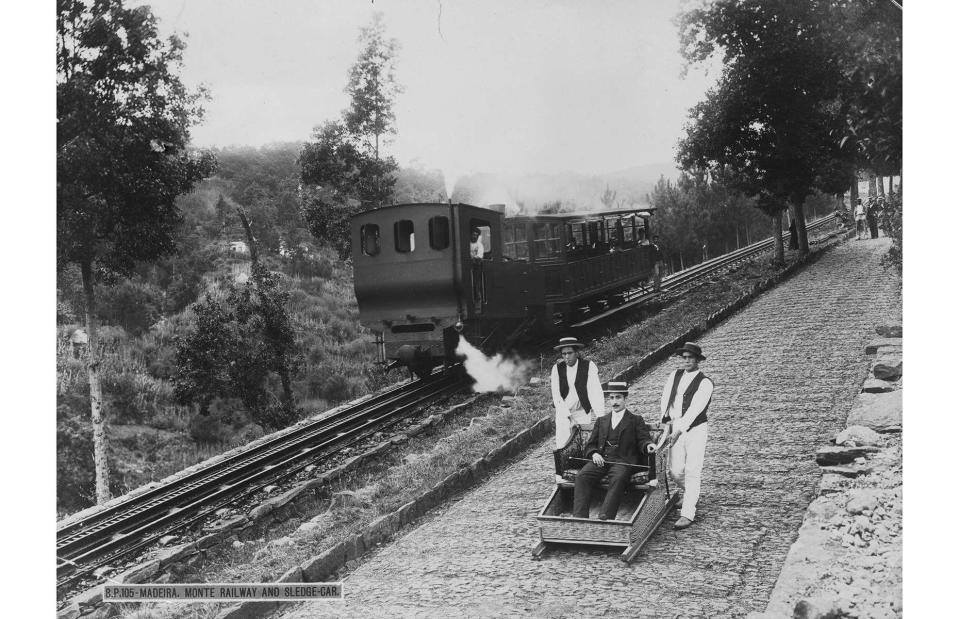
Hulton Archive/Getty Images
While the sedan was one traditional way for well-heeled Victorian tourists to get around, anyone who has visited Funchal on the Portuguese Atlantic island of Madeira will recognise the wicker sledge-like contraption in this circa-1900 photograph. The Monte toboggan dates back to the 1850s, when it became the first means of downhill transportation for residents who wanted to reach the city of Funchal quickly from the scenic village of Monte. Steered by men known as the Carreiros do Monte (dressed in white here), the toboggan swiftly became a tourist attraction that continues to delight modern visitors.
Ruling the waves
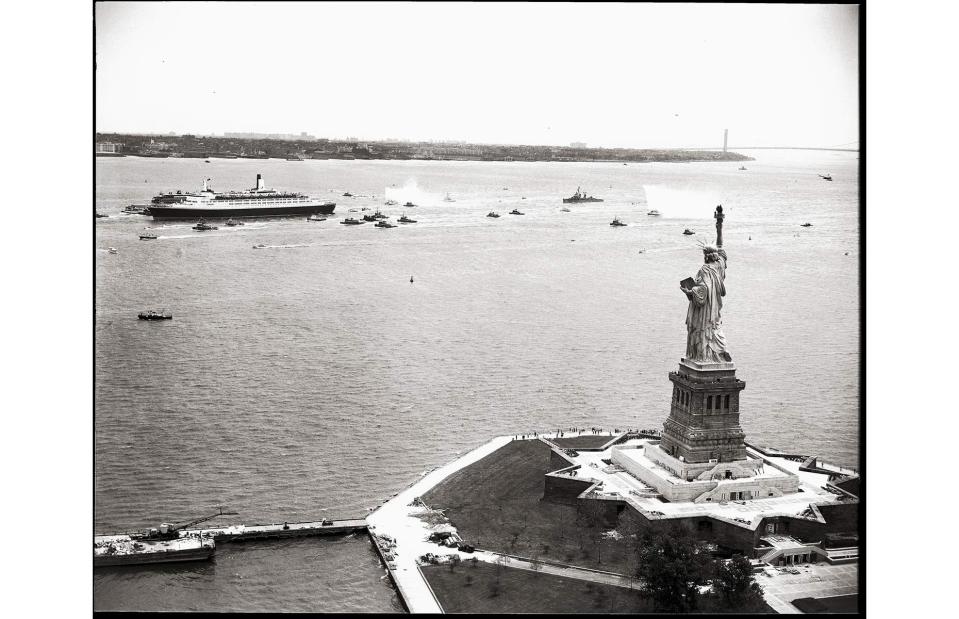
Charles E. Rotkin/Corbis/VCG via Getty Images
The timeless allure of maritime travel endured throughout the Victorian and Edwardian ages. Cunard, founded in 1840, was the first cruise line to use steam-powered ferries in Nova Scotia, before branching out across North America and, later, the Atlantic. During its early days, Cunard's ships transported the likes of Charles Dickens and Mark Twain. The cruise line even played a part in the Charge of the Light Brigade. It was a company behind many 'firsts' in the cruising world, including the first steel ship with electrical lighting. Here, the passenger liner Queen Elizabeth II sails past a newly-built Statue of Liberty around the turn of the century.
The first purpose-built cruise ship
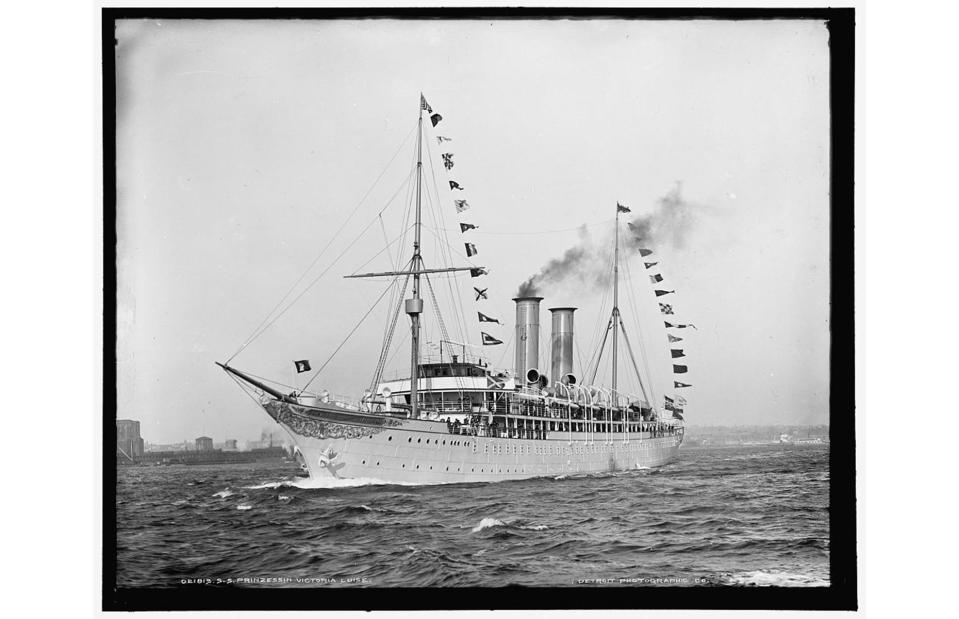
Library of Congress/Detroit Publishing Co.
The German Hamburg-America Line company was the first to sail with a purpose-built cruise ship designed for luxury travel. Boasting 120 first-class cabins, a gym, a library, a ballroom and even an onboard art gallery, the Prinzessin Victoria Luise (pictured here around 1901) was launched in June 1900. It was only operational for six years before running aground off the coast of Jamaica in 1906. Though there were no fatalities in the accident, the captain took his own life after the Victoria Luise had been evacuated.
A Titanic tragedy
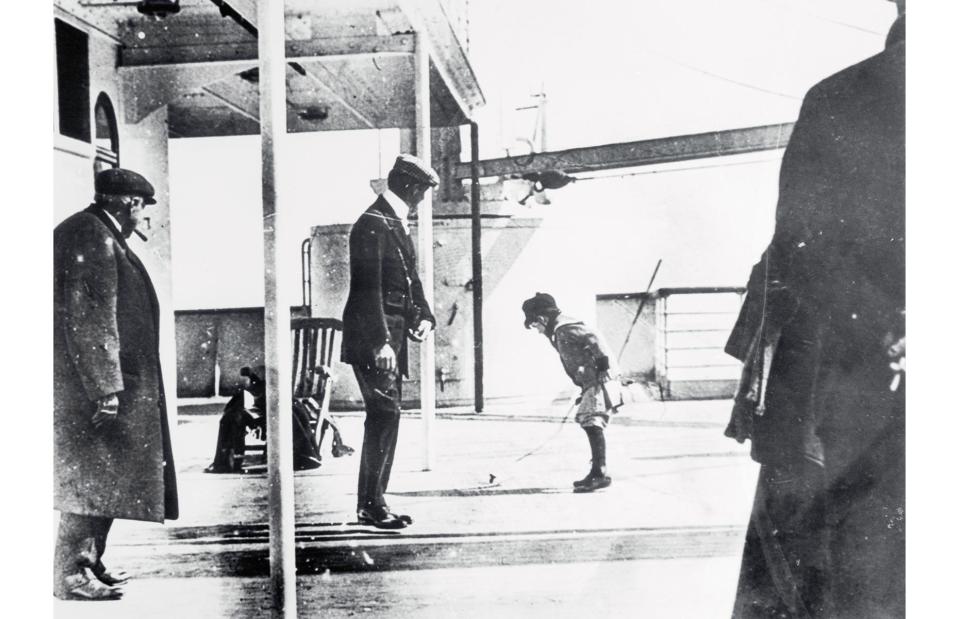
Bettmann/Getty Images
This period also saw the rise of the White Star Line, who launched the Titanic for its maiden voyage on 10 April 1912. Departing Southampton, the ship was carrying elite businesspeople, journalists and actresses travelling for pleasure, as well as those of lesser means hoping to begin a new life in America. But just four days later, the ill-fated ship famously struck an iceberg and sank in the middle of the North Atlantic. As a result of the accident, over 1,500 lives were lost. This haunting photo was taken on Titanic’s saloon deck by the Reverend E. M. Brown, who had safely disembarked at Queenstown before the disaster occurred.
The US's first cross-country road trip
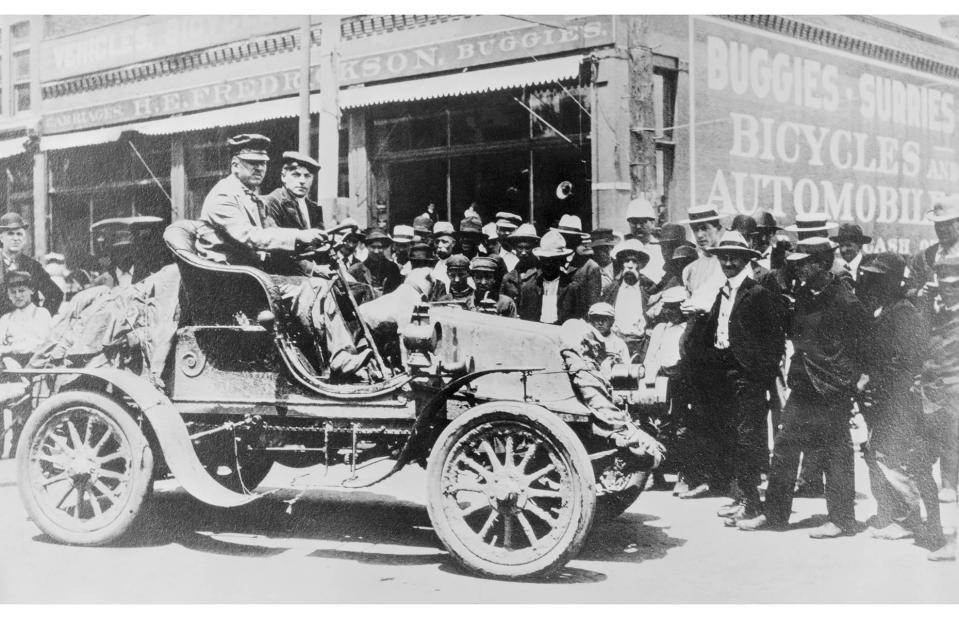
Bettmann/Getty Images
Early in the 20th century, automobiles were becoming the next big thing in tourism and transport. To showcase the capabilities of these exciting new vehicles, one audacious Vermont doctor wagered $50 that he could cross America solely by car. On 23 May 1903, Horatio Jackson and his mechanic companion Sewall Crocker set off from San Francisco in a 20-horsepower Winton on what would become the first coast-to-coast road trip in US history. The drive to their finish line in NYC took 63 days and 3,000 litres (800 gallons) of gas, though Jackson never cashed in his winnings. This image was taken in Omaha, Nebraska, roughly halfway through the journey.
Rise of the RV
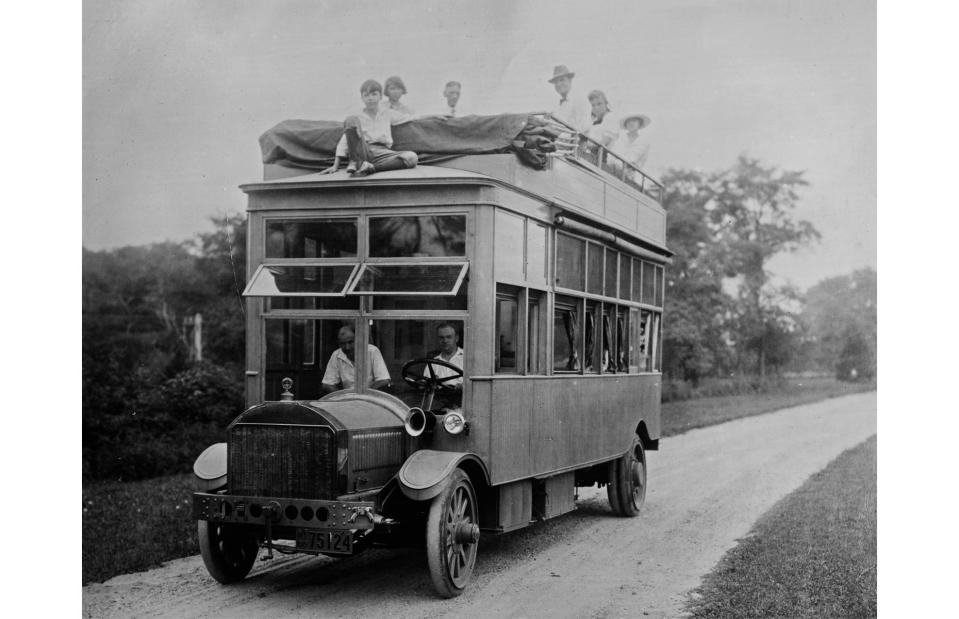
Hum Images/Alamy Stock Photo
As 20th-century technology progressed, automobiles became even better suited to touring. In 1915, the earliest version of the recreational vehicle, also known as an RV, was created. Custom-built by Roland Conklin’s Gas-Electric Motor Bus Company, the trailblazing motorhome (pictured) had a double-decker design mounted on the chassis of an auto bus. Not only was it fitted with folding tables, convertible sofa beds, a shower and a commode, it also had a roof garden. Conklin tested the vehicle for the first time on a family trip from San Francisco to Huntington, New York, a feat which inspired nationwide media coverage and began America’s RV love affair.
Making the world smaller
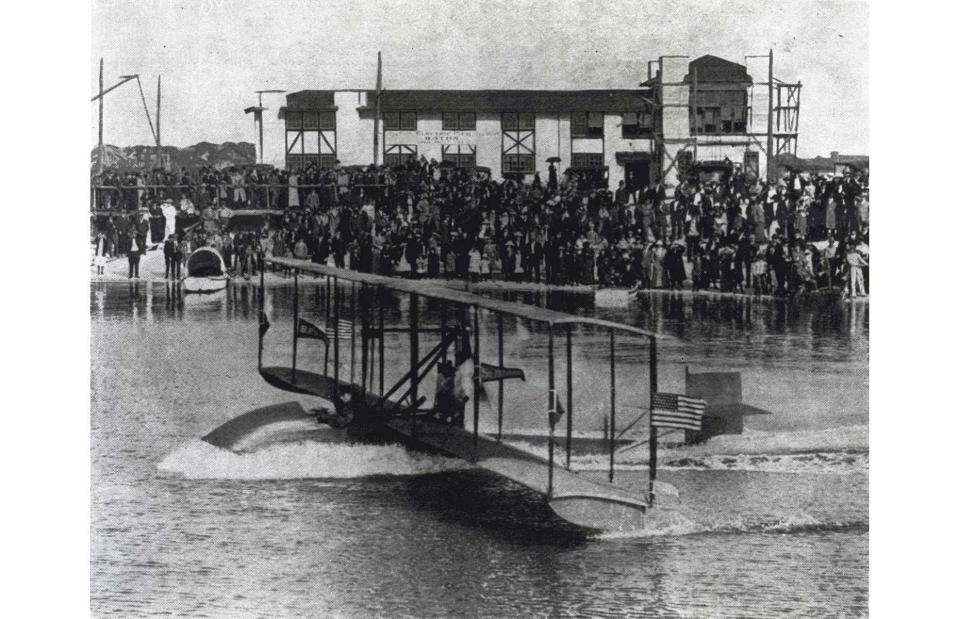
Unknown author/Public domain/Wikimedia Commons
Though the Wright brothers invented the world’s first plane in the early 1900s, it would take a few more years before the first scheduled passenger airline took flight. On 1 January 1914, the St. Petersburg-Tampa Airboat Line spread its wings and started running a ‘flying boat’ service between the Floridian cities of St. Petersburg and Tampa for the first time. The flight took just 23 minutes, far quicker than the same journey by steamship (two hours) and rail (up to 12 hours). The airline flew the route twice daily, six days a week, for nearly four months and is credited with paving the way for commercial aviation.


